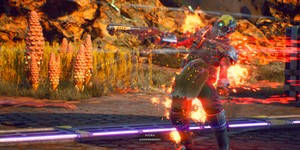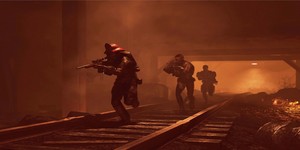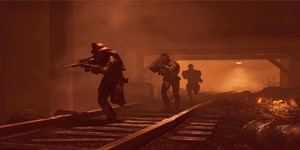
Fallout 4 Review
Price: £39.99Developer: Bethesda Game Studios
Publisher: Bethesda Softworks
Platforms: PC, PS4, Xbox One
Version Reviewed: PC
I've always been aware of the flaws that are regularly pointed out in Bethesda games, the frequent bugs, the often clumsy writing, the spongy combat. But in the great scheme of things, I've viewed them as somewhat nitpicky. It seems churlish to complain about the odd floating mammoth when a developer gives you an entire country to explore. And for every line of stilted dialogue that creeps into the script, there's a fabulously fun questline involving a talking dog who's the servant of a god, or a pair of wannabe superheroes battling over a chunk of wasteland, or a Vault filled with clones called Gary.
Fallout 4 feels different, however. There's something about post-apocalyptic Boston that doesn't quite sit right, and I'm not referring to the nuclear devastation that surrounds you at every turn. It's not that it's poorly made or dull in any particular way. Indeed, there are times when it is as visually breathtaking and downright weird as any other of Bethesda's grand titles. Bethesda's ambition has always, come at the cost of refinement to an extent. Here, though, the way the team has approached ideas both new and old serves to emphasise Fallout 4's systemic limitations to the point where they become impossible to ignore.
As is tradition by this point, Fallout 4 sees you playing as a vault dweller who emerges from the peculiar safety of Vault 111 into the chill, irradiated air of a sprawling nuclear wasteland. Whereas Fallout 3 had you searching for your father, Fallout 4 puts you on the trail of your kidnapped son, Shaun. The breadcrumbs lead through the wilds of the Commonwealth and deep into the urban tangle of Boston, whose scattered residents live in constant fear of the mysterious Institute, who are infiltrating society with human-like Synths for reasons nobody is able to fathom.
In both theme and structure Fallout 4 is very similar to 3. The dangerous wastes of the commonwealth wrap around Boston's skyscrapers like an exclusion zone around a leaking reactor, and the eerie juxtaposition of post-apocalyptic horror with 1950s' optimism is threaded through with references to America's emergent history, though this time the focus is on revolution and abolitionism, rather than Fallout 3's deconstruction of Washington's political infrastructure.
Bethesda counter these similarities by giving Fallout 4 a much more vibrant aesthetic. Gone are the instagram-filtered tones of Fallout 3, replaced with a colour palette that better reflects how light works. During the day, the Wasteland is remarkably bright and colourful, from the garish scarlet outline of a Red Rocket gas station, to the motley tarpaulins and neon signage of Diamond City, Boston's central urban hub. At night, those colours fade away to a moody blue, and it's then you start to feel the ghosts of the apolcalypse around you - the stillness of the air, the cracked roads and crumbling buildings, the dozens of pre-war skeletons scattered about like children's toys, twisted and broken. The mannequins -oh god the mannequins - standing in dusty corners and shattered shop-fronts, always staring, always judging.

MSI MPG Velox 100R Chassis Review
October 14 2021 | 15:04

![Fallout 4 review [TUESDAY] Fallout 4 Review](http://images.bit-tech.net/content_images/2015/11/fallout-4-review/fallout1-614x345.jpg)
![Fallout 4 review [TUESDAY] Fallout 4 Review](http://images.bit-tech.net/content_images/2015/11/fallout-4-review/fallout2-614x345.jpg)
![Fallout 4 review [TUESDAY] Fallout 4 Review](http://images.bit-tech.net/content_images/2015/11/fallout-4-review/fallout3-614x345.jpg)
![Fallout 4 review [TUESDAY] Fallout 4 Review](http://images.bit-tech.net/content_images/2015/11/fallout-4-review/fallout4-614x345.jpg)








Want to comment? Please log in.